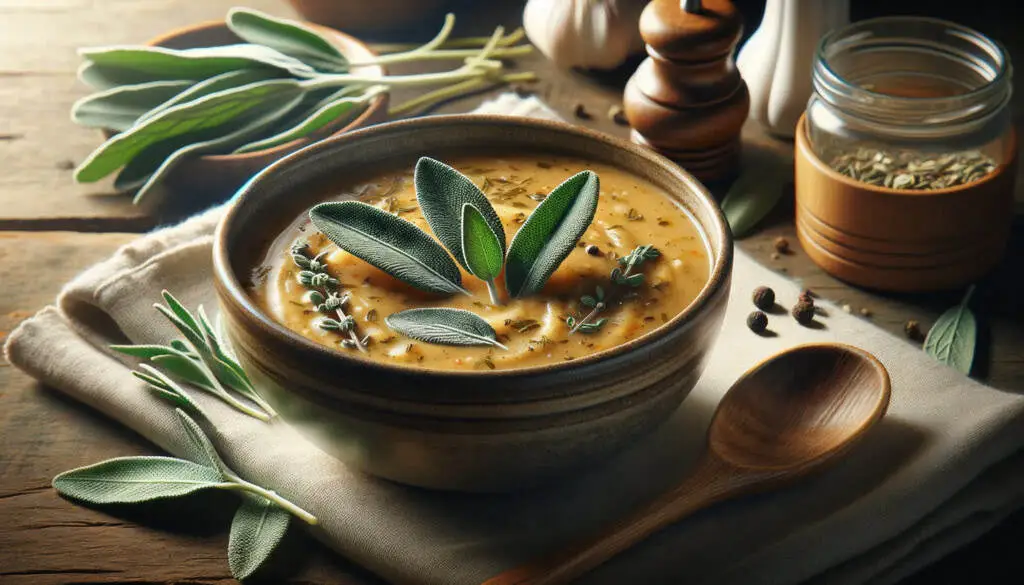In my practice as a dietitian and nutritionist, I often focus on the deeply rooted tradition of using medicinal plants as food. This tradition spans millennia: our distant ancestors, lacking access to modern medicine, actively used medicinal plants to treat and strengthen health. From ancient Greece and China to the indigenous tribes of America—each culture had its knowledge of the healing properties of plants. They were used not only for medicinal purposes but also included in their daily diet for health and well-being.
Today, in an era surrounded by numerous artificial additives and processed foods, returning to the roots and using medicinal plants in our diet gains new relevance. They are sources of natural vitamins, minerals, and antioxidants. Including plants such as ginger, garlic, sage, and many others in our daily diet can help not only improve overall well-being but also prevent a range of diseases. That’s why, based on my experience and current research, I recommend paying special attention to these gifts of nature.
Historical Overview
In my research in dietetics and nutrition, I always pay special attention to the historical roots of nutrition. Medicinal plants have played a key role in the culinary and medical traditions of many cultures for centuries.
In ancient Greece, for example, the ability to use plants for healing and nutrition was truly an art form. Hippocrates, the father of medicine, often mentioned herbs in his treatises. He advised using sage for strengthening health and treating various ailments. The use of olive oil was also famous, considered not only a food product but also a medicinal remedy.
Slavic peoples also possessed rich knowledge of medicinal plants. They actively used plants such as St. John’s wort, plantain, and yarrow, not only for healing but also as food additives. These herbs were used to improve digestion, strengthen the immune system, and even as a means of preserving food.
Among the Saami people of the Kola Peninsula, known for their unique relationship with nature, medicinal plants held a special place in their culture. They used berries and herbs, such as cloudberries and thyme, not only as medicine but also as important components in their daily diet. These plants helped them survive in harsh climatic conditions, providing necessary vitamins and minerals.
These examples underline how deeply the roots of using medicinal plants in the culture of various peoples’ diets are embedded. They serve as a reminder that the wisdom of our ancestors can find its application in the modern world.
Medicinal plants and their nutritional properties
Medicinal plants have been an integral part of both traditional and modern cuisine, offering a unique combination of flavors and health benefits. Here’s an overview of some commonly used medicinal plants and their food properties:
1. Ginger (Zingiber officinale): Ginger is renowned for its digestive and anti-inflammatory properties. It’s commonly used to alleviate nausea and improve digestion. Ginger can be added to a variety of dishes, from savory to sweet, and is also popular in teas and beverages.
2. Garlic (Allium sativum): Garlic is famous for its antibacterial and antiviral qualities. It contains allicin, which is believed to boost the immune system and may reduce the risk of heart diseases. Regular consumption of garlic can help regulate cholesterol levels and blood pressure. It’s a versatile ingredient, enhancing the flavor of almost any savory dish.
3. Sage (Salvia officinalis): Sage has antiseptic and anti-inflammatory effects and is known for enhancing memory and cognitive functions. It’s also used in alleviating symptoms of menopause. Sage is a great addition to meat dishes, soups, and sauces, imparting a unique aroma and flavor.
4. Thyme (Thymus vulgaris): Thyme possesses antimicrobial and anti-inflammatory properties. It contains thymol, which is effective against respiratory infections and coughs. Thyme aids in digestion and is a great addition to marinades, soups, and meat dishes.
5. Turmeric (Curcuma longa): Turmeric, with its active component curcumin, offers anti-inflammatory and antioxidant properties. It’s commonly used in curries and other Asian cuisines, contributing to digestive health and potentially reducing inflammation.
6. Peppermint (Mentha piperita): Peppermint is known for its soothing effect on the digestive system and is often used to relieve symptoms of irritable bowel syndrome. It’s also a popular flavor in teas, desserts, and confectioneries.
7. Chamomile (Matricaria chamomilla): Chamomile is widely used for its calming effects and is often consumed as a tea. It’s known to aid in relaxation and can help with sleep disorders.
8. Cinnamon (Cinnamomum verum): Cinnamon is not only a popular spice but also has medicinal properties, including blood sugar regulation and anti-inflammatory effects. It’s used in a variety of sweet and savory dishes.
Incorporating these medicinal plants into your diet can enhance flavor while providing various health benefits. It’s a testament to the rich legacy of traditional healing practices and the growing appreciation of natural remedies in contemporary cuisine.
Modern application in the food industry
In the modern food industry, medicinal plants are increasingly used, a trend that aligns with my professional experience in dietetics and nutrition. These plants offer valuable nutritional and therapeutic properties, making them indispensable in creating healthy products.
Use in Food Production
Medicinal plants are often used in food production as natural flavorings and preservatives. For example, rosemary, known for its antioxidant properties, is frequently added to oils and meat products to extend their shelf life. Similarly, ginger, cinnamon, and mint are popular for flavoring and for their digestive and general wellness benefits.
Inclusion in Dietary Supplements
Medicinal plants play a key role in many dietary supplements. Plant extracts, such as ginseng, echinacea, and ginkgo biloba, are used to enhance immunity, memory, and overall body tone. These supplements are often recommended for maintaining health amid modern stress and high workloads.
Application in Children’s Nutrition
Medicinal plants also have an important place in children’s nutrition. Fennel, for instance, is traditionally used to improve digestion in children and is often included in teas and infant formulas. Chamomile, known for its calming properties and promoting better sleep, is also popular in children’s supplements. Using these natural components in children’s nutrition allows parents to choose safe and beneficial products for their kids.
In conclusion, the modern food industry actively integrates medicinal plants into various products, offering consumers not only tasty but also healthful dietary options. This approach combines ancient knowledge of medicinal plants with modern technologies, creating products that contribute to improved health and well-being.
Examples of recipes and cooking methods
Drawing from my experience in dietetics and nutrition, I’d like to offer some recipes that are not only delicious but also promote health through the use of medicinal plants. It’s also important to consider their preparation methods to maximally preserve their beneficial properties.
1. Ginger Tea

- – Grate about 1 cm of fresh ginger.
- – Pour boiling water over it and let it steep for 5-10 minutes.
- – Add honey and lemon to taste.
This tea is ideal for improving digestion and boosting immunity. The steeping method helps preserve ginger’s active components.
2. Garlic and Greens Salad

- – Chop fresh spinach, arugula, and basil leaves.
- – Add diced tomato, cucumber, and a bit of minced garlic.
- – Dress with olive oil and lemon juice.
Raw garlic retains its antibacterial properties and enhances the salad’s flavor.
3. Chamomile and Mint Tea

- – Brew dried chamomile and mint in a cup.
- – Allow to steep for 5-10 minutes.
- – Add honey for sweetness, if desired.
This tea is calming and ideal for evening relaxation. Infusing is the best way to preserve the beneficial properties of the herbs.
4. Chicken with Thyme and Rosemary

- – Coat chicken thighs in a mix of chopped rosemary, thyme, salt, and pepper.
- – Bake in the oven at 180°C (356°F) for 30-40 minutes.
Baking is a good way to retain the flavor and aroma of the herbs, as well as their health benefits.
5. Sage Soup

- – Sauté onion and garlic over medium heat, add chopped potatoes and carrots.
- – Pour in vegetable broth and add a few sage leaves.
- – Cook until the vegetables are tender, then blend until smooth.
Sage adds a rich flavor and aids digestion. Slow cooking helps preserve the nutrients in the vegetables and herbs.
These recipes demonstrate how to integrate medicinal plants into daily meals and highlight the importance of proper processing to maintain their therapeutic properties.
Conclusion
Concluding our discussion about medicinal plants in food, it’s essential to emphasize their significance and prospects in the modern world. Drawing from my extensive experience in dietetics and nutrition, I assert that integrating medicinal plants into our diet opens new horizons for maintaining and enhancing health.
Medicinal plants possess a unique combination of nutrients, antioxidants, vitamins, and minerals that can significantly improve the quality of our nutrition. Regular consumption contributes to the normalization of various body systems, strengthens immunity, and aids in the prevention of many diseases.
Furthermore, using medicinal plants in food supports the concept of a holistic and balanced approach to health. Instead of relying solely on pharmaceutical drugs, we have the opportunity to naturally incorporate healing substances into our daily lives, positively impacting our physical and psychological well-being.
The health benefits of medicinal plants are diverse: from improving digestion and sleep to reducing the risk of chronic diseases such as diabetes, cardiovascular problems, and even some types of cancer. However, it’s crucial to adopt a sensible approach and be aware of potential contraindications, so consultation with a specialist is recommended before making significant dietary changes.
In conclusion, using medicinal plants in food is not just a culinary trend but a conscious choice for health and longevity. It’s a path to harmony with nature and our bodies, accessible to each of us.















